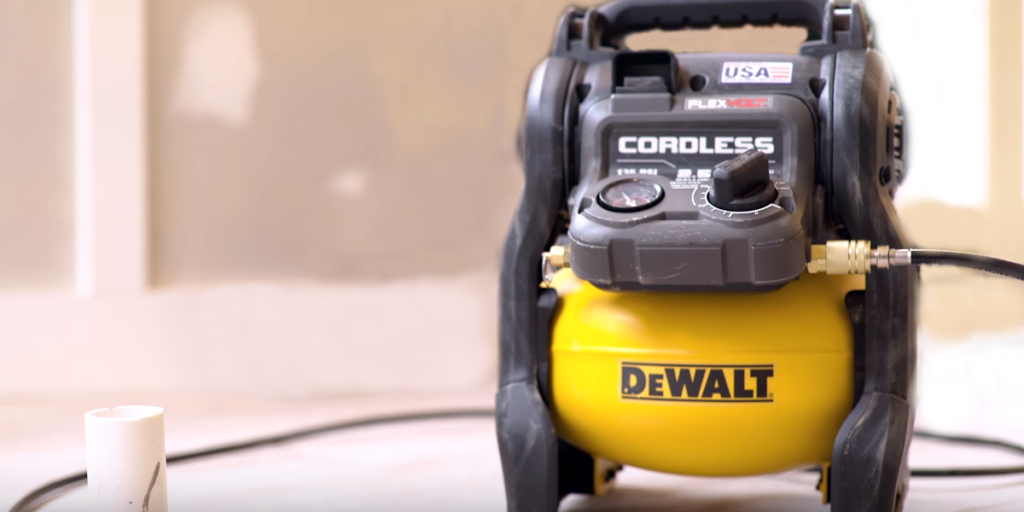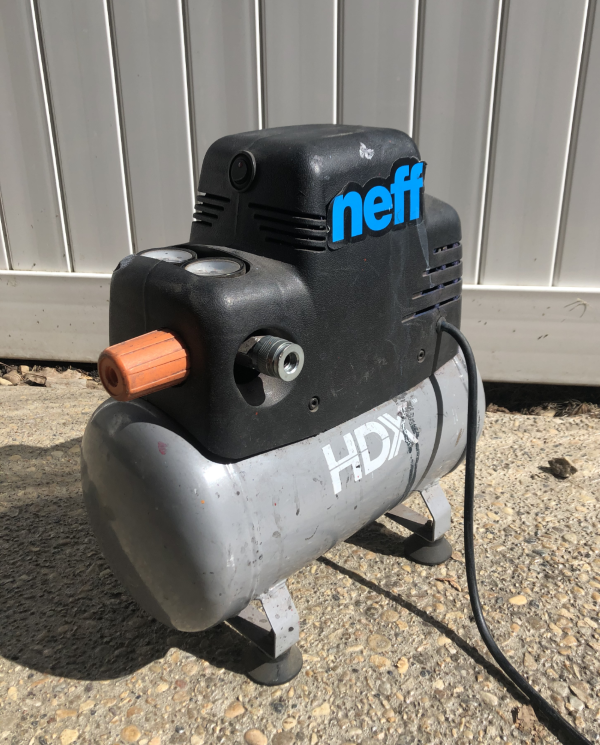When you’re getting into airbrushing, you want to pick the right airbrush compressor for the job at hand. As an airbrush and body painting artist of over 7 years, I’ve experimented with many different airbrush compressors. I’ve found that your choice of airbrush compressor mainly depends on its intended usage.
The truth is that lots of airbrush compressors have tons of bells and whistles that are really not important.
This article is about the most important features that you need to consider when picking out an airbrush compressor.
I’m not going to bore you with endless product statistics (Links are included to more in-depth product information). This article is intended to give you some good options while also showing you how to pick out a compressor that will meet your needs. In fact, helping you pick a product that is right for you is my #1 goal.
If you have any further questions, ask them in the comment section below and I will answer them!
With that, let’s dive in and make sure to check out the bonus verteran-artist’s tip at the end.

What to look for in an airbrush compressor
The 5 most important features of your airbrush compressor are:
- PSI output
- Holding tank
- Noise level
- Portability (weight)
- Durability
The PSI output is important because you will need adequate airflow to push the paint out of the nozzle. There is nothing worse than trying to paint large blends or fade patterns when your airbrush can’t keep up.
The holding tank is important to give your motor a break. Airbrush compressor motors can overheat with overuse. Many tankless compressors get around this by installing an auto shut off valve for when you’re not pushing paint out. This is fine for small projects where you intermittently paint for several minutes at a time. For medium to large projects, it is more economical to have a holding tank that can charge up. This allows you to paint with high pressure for extended periods without worrying about overheating the motor.
A noisy airbrush compressor can be grating and quite unpleasant if used indoors. If you value your peace and quiet, get an air compressor with a low decibel rating.
Some airbrush compressors are more portable than others. If you’re looking to bring your airbrush gear around to multiple events, consider getting something smaller and lighter.
The durability factor is important if you expect a lot from your airbrush compressor. For example, sometimes I work as a body painter for several hours a day outdoors rain or shine. Therefore, I expect my airbrush compressor to take some water, mud, some bangs and bumps, and to continue working for long periods.
Depending on your intended usage, different characteristics will be important to you. If you’re willing to pay for it, you can pretty well get an airbrush compressor that does it all. But there’s no point in overspending when you don’t need the extra features.
Let’s jump in to find a compressor that fits your needs perfectly.
1. Iwata-Medea Studio Series Power Jet Pro Double Piston Air Compressor
This airbrush compressor is a powerhouse. It’s about as close as you can get to a one-size-fits-all option. Produced by the reputable airbrush company Iwata-Medea, this compressor is made by airbrushers for airbrushers. Iwata-Medea is known for its quality and customer service, giving you confidence in the durability and craftmanship of this product. It pushes out up to 70 PSI air pressure at only 55 decibels of sound. The combination of power and quiet operation makes this airbrush compressor a sure pick for almost any project.
| Iwata Medea Power Jet Pro Most Important Features | |
|---|---|
| PSI Output | medium/high – Up to 70 PSI |
| Holding Tank | Small – 1/2 gallon |
| Noise Level | medium/low – 55 decibels |
| Weight | Medium – 22 pounds |
| Durability | 8/10 |
If you’re wondering why it looks like a box, it’s a protective mechanism. The motor, holding tank, and other vulnerable parts are sheathed by a hard metal casing. This design makes the Power Jet Pro durable and portable. I wouldn’t toss this compressor into the back of a pickup truck but I would be comfortable taking it to gigs as it is.
Additionally, the Power Jet Pro has two hose outputs. So if you ever need to run two airbrushes at the same time, you can easily hook another hose up without messing around with aftermarket hose splitters. (Keep in mind that you won’t be able to operate both airbrushes at 70 PSI. The air pressure will roughly be split in half if you do use the double hose feature).
Overall, the Iwata-Medea Power Jet Pro is a great all-around airbrush compressor. If you’re serious about airbrushing and need something that can handle any project, big or small, I would highly recommend this product.
2. Paasche Airbrush D3000R 1/5 HP Compressor
This airbrush compressor is a delicate but well-balanced alternative to more beefy options. It’s made by another titan in the airbrushing industry – Paasche. Rest assured that you’ll be getting quality parts that are finely tuned specifically for airbrushing operation.
I have used this airbrush compressor for many years and find that it works best for small to medium projects. It’s very quiet, producing only 47 decibels while pumping out up to 40 PSI – a remarkable output for the accompanying pur of the motor.
| Paasche Airbrush D3000R Most Important Features | |
|---|---|
| PSI Output | medium/low – Up to 40 PSI |
| Holding Tank | Small – 1/2 gallon |
| Noise Level | low 47 decibels |
| Weight | Light – 11 pounds |
| Durability | 5/10 |
The awkward design is the main downside of this airbrush compressor. As you can see from the picture, the motor is narrowly stacked on top of the holding tank making the whole unit quite top heavy. The built-in moisture trap, as well as various hoses and wires, stick out in all directions. I’m always nervous taking this compressor to events because I’m afraid of breaking something during transportation.
All in all, you will love this compressor if you want a finely-tuned, reliable product from a great airbrushing manufacturer and plan to work on low-to-medium-pressure applications in one place.
3. Paasche Airbrush DC850R Compressor
The DC850R is another stellar Paasche product. I like to think of it as a jacked up version of the D3000R. This airbrush compressor takes the quality make of its smaller counterpart, slaps on a 1.5 gallon holding tank, and sports a slightly more powerful motor. These upgrades help the DC850 pump out up to 90 PSI working pressure – a main feature if you’re looking for an airbrush compressor with versatility.
| Paasche Airbrush DC850R Most Important Features | |
|---|---|
| PSI Output | High – Up to 90 PSI |
| Holding Tank | Medium – 1.5 gallons |
| Noise Level | Medium/Low 58 decibels |
| Weight | Heavy – 40 pounds |
| Durability | 7/10 |
The DC850 also has two quick-connect hose outputs – giving you more options for running two airbrushes simultaneously.
All the DC850 upgrades do have one main drawback – the weight. It weighs 40 pounds which does make it awkward to lug around (even with the solid handle on top). The DC950 slightly improves the awkward design of the D3000R, but it still has a few hoses and knobs sticking out in weird places. Therefore, portability is not this unit’s strong suit.
For small to large airbrush applications, the Paasche DC850 is a solid option. It’s got the power you’ll need, a low/medium sound output for indoor operation, and a quality company behind it in Paasche. Plop this airbrush compressor in your studio or workplace, and it will serve you well for years to come.
4. Timbertech Upgraded Basic Airbrush Compressor ABPST07
The Timbertech ABPST07 is a great tankless airbrush compressor for the hobbyist on a budget. This little guy is all you need for small applications such as model painting or small canvases. Its compact design makes it a perfect grab-&-go unit weighing in at only 7 lbs – ideal for frequent transportation.
| Timbertech ABPST07 Most Important Features | |
|---|---|
| PSI Output | Medium/Low – up to 57 PSI |
| Holding Tank | No |
| Noise Level | Low 47 decibels |
| Weight | Light – 7 pounds |
| Durability | 6/10 |
The Timbertech ABPST07 has one main drawback – the lack of a holding tank. Generally, I prefer airbrush compressors with holding tanks because they help reduce heat buildup from the motor (and therefore reduce motor wear and tear). However, the advantage of a no-holding tank setup is the lightweight and compact design (as well as they tend to be a little cheaper).
I rate the durability of this airbrush compressor as 6/10 because it comes from a less known brand. I must admit, this airbrush compressor has never failed me, but there is a reason the premium brands in the airbrushing world charge more – it’s because they have a reputation for being the highest quality in the industry. Not to say Timbertech doesn’t make good stuff too, but after personally blowing up several off-brand airbrush compressors from overheating issues, I can’t help but mention the risks of going for the bargain product.
If you really want to save space, don’t need a ton of air pressure, or intend to transport your airbrush gear frequently, the Timbertech ABPST07 will get the job done nicely.
5. California Air Tools CAT-1P1060S Portable Air Compressor
The CAT-1P1060S is one of the most well-rounded airbrush compressors on the market. California Air tools took the most important features for airbrush compressors and managed to get many of them into one unit. This product sports a 1-gallon holding tank and a 0.6 horsepower motor – generating up to 90 PSI of air flow. It manages to pack a punch while making only 56 decibels of noise and weighing a reasonable 30 pounds.
| California Air Tools CAT-1P1060S Most Important Features | |
|---|---|
| PSI Output | High – up to 90 PSI |
| Holding Tank | Medium – 1 gallon |
| Noise Level | Medium/Low 56 decibels |
| Weight | Medium/Heavy – 30 pounds |
| Durability | 7/10 |
The California Air tools CAT-1P1060S reminds me of the Paasche DC850R in many ways. They’re both very versatile and able to serve small to large sized airbrush applications. The main difference between these two compressors in my estimation is the price and the brand behind the product. They are both good companies, although Paasche is more specialized to the airbrush game. California Air Tools makes compressors for all kinds of applications, not just airbrushing (check-out their diverse air compressor product line if you need a larger unit with even more air pressure). Make of that what you will. If you believe that you get what you pay for, keep in mind that the CAT – 1P1060S is a fraction of the cost of the Paasche DC850R.
If you’re looking for a balance between power, noise level, size, and price, the CAT-1P1060S is a wonderful choice.
Bonus Veteran-Artist’s Tip: You don’t need a fancy airbrush compressor to get great results
When I first started airbrushing, I was in college and broke. So I didn’t have the option of getting a $200-plus airbrush compressor. Instead, I went down to my local hardware store and got the cheapest shop air compressor I could find.

I bought the shop air compressor as a temporary fix, but didn’t know at the time that I would use it for years and years. My $50 unit pumped out 90 PSI, weighed just under 20 pounds, and had a 1 gallon holding tank. On top of all that, this trusty compressor was durable as all hell. I took it to dozens of events over the years – some in extremely wet and muddy conditions. It got really banged up during transportation and it never skipped a beat.
After several years, I started getting fancier airbrush compressors to see what all the fuss was about. Low and behold, several of them broke from overheating, mild bumps from transportation, or from simply tipping over.
I ended up using my first cheap air compressor for many more years!
The only discernible difference between a common shop air compressor and a fancy airbrush specific compressor is the price and noise level. Cheap shop compressors typically run in the 70 – 90 decibel range. With brands like Iwata and Paasche, you’re paying for smooth, low-noise operation (45 – 60 decibels). They’re also very reliable, but can be relatively delicate from my experience.
If you’re on a budget, want a unit that can take some abuse, and don’t mind the noise level, just get a cheap shop air compressor like this one. The main thing you need for your airbrush to work flawlessly is consistent airflow coming through the line. The $50 shop air compressor fulfills this purpose just fine.
Picking out an airbrush compressor doesn’t need to be hard. Your choice should depend on your intended usage. If you need more air pressure, you’ll generally have to get a heavier and louder unit. If you want something small and quiet, you’ll have to sacrifice high air pressure output.
Hopefully this article has given you some insight into what I look for in airbrush compressors. If you get one of the five reviewed here, great! If you still haven’t found what you’re looking for, keep looking on Amazon, Home Depot, or really any other retailer that sells air compressors. The most important thing is that you get something that does exactly what you need.







